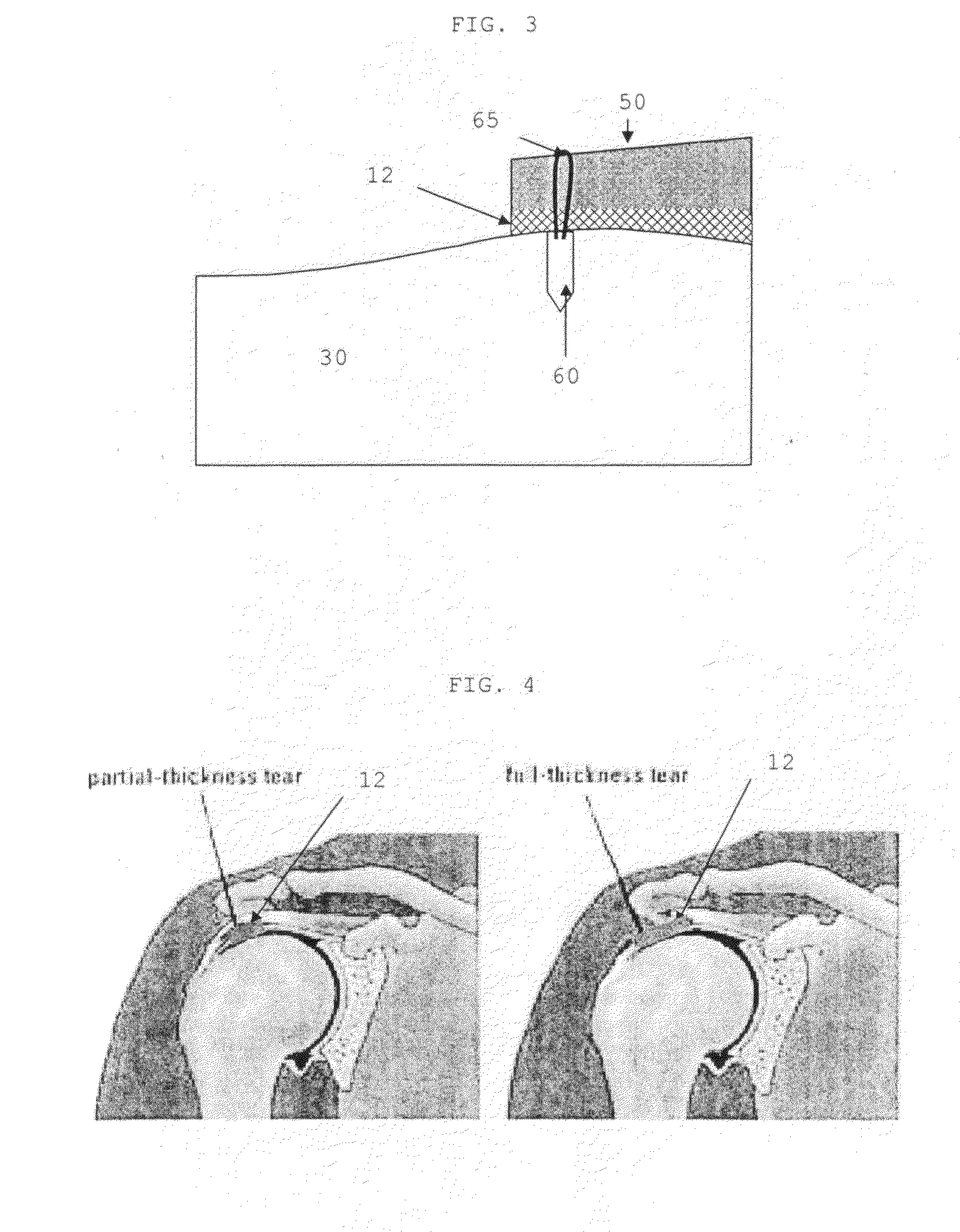Tissue integration implant
a tissue integration and implant technology, applied in the field of medical technology, can solve the problems of joint instability, severe pain, wear and tear, soft tissue damage, etc., and achieve the effect of enhancing integration
- Summary
- Abstract
- Description
- Claims
- Application Information
AI Technical Summary
Benefits of technology
Problems solved by technology
Method used
Image
Examples
Embodiment Construction
[0019]The present invention is directed to the repair of various soft tissues and includes a tissue implant and a method of repairing a tissue defect using the implant.
[0020]As used herein, the term “soft tissue” relates to tissues that connect or support structures within the body, such as, for example, tendons, ligaments, fibrous tissues, meniscus tissue, muscle, labrum, cartilage, skin, dermal layers, joint capsule, synovium, and the like.
[0021]As used herein, the term “hard tissue” is used to refer to bone, calcified tissue, or the like.
[0022]In many of the illustrative examples described below, cartilage and other specific soft tissues will be used to exemplify various embodiments of the invention. These examples are not meant to limit the scope of the invention in any way, as the methods and devices disclosed herein may be used with other soft tissues.
[0023]Although a number of different therapeutic methods are currently being used to treat soft tissue defects, they have only ...
PUM
| Property | Measurement | Unit |
|---|---|---|
| Percent by volume | aaaaa | aaaaa |
| Volume | aaaaa | aaaaa |
| Compressibility | aaaaa | aaaaa |
Abstract
Description
Claims
Application Information
 Login to View More
Login to View More - R&D
- Intellectual Property
- Life Sciences
- Materials
- Tech Scout
- Unparalleled Data Quality
- Higher Quality Content
- 60% Fewer Hallucinations
Browse by: Latest US Patents, China's latest patents, Technical Efficacy Thesaurus, Application Domain, Technology Topic, Popular Technical Reports.
© 2025 PatSnap. All rights reserved.Legal|Privacy policy|Modern Slavery Act Transparency Statement|Sitemap|About US| Contact US: help@patsnap.com



